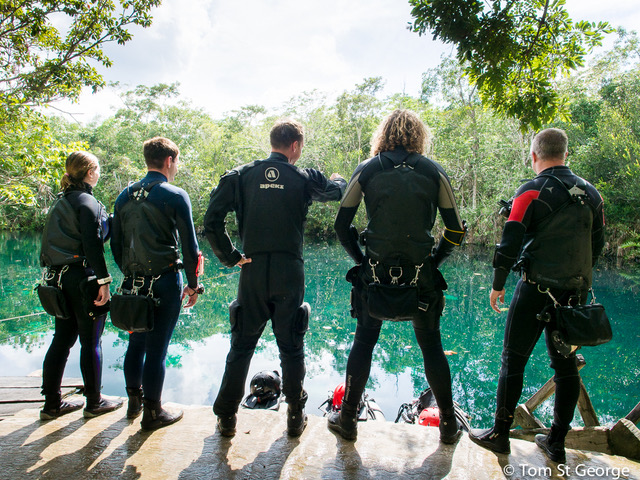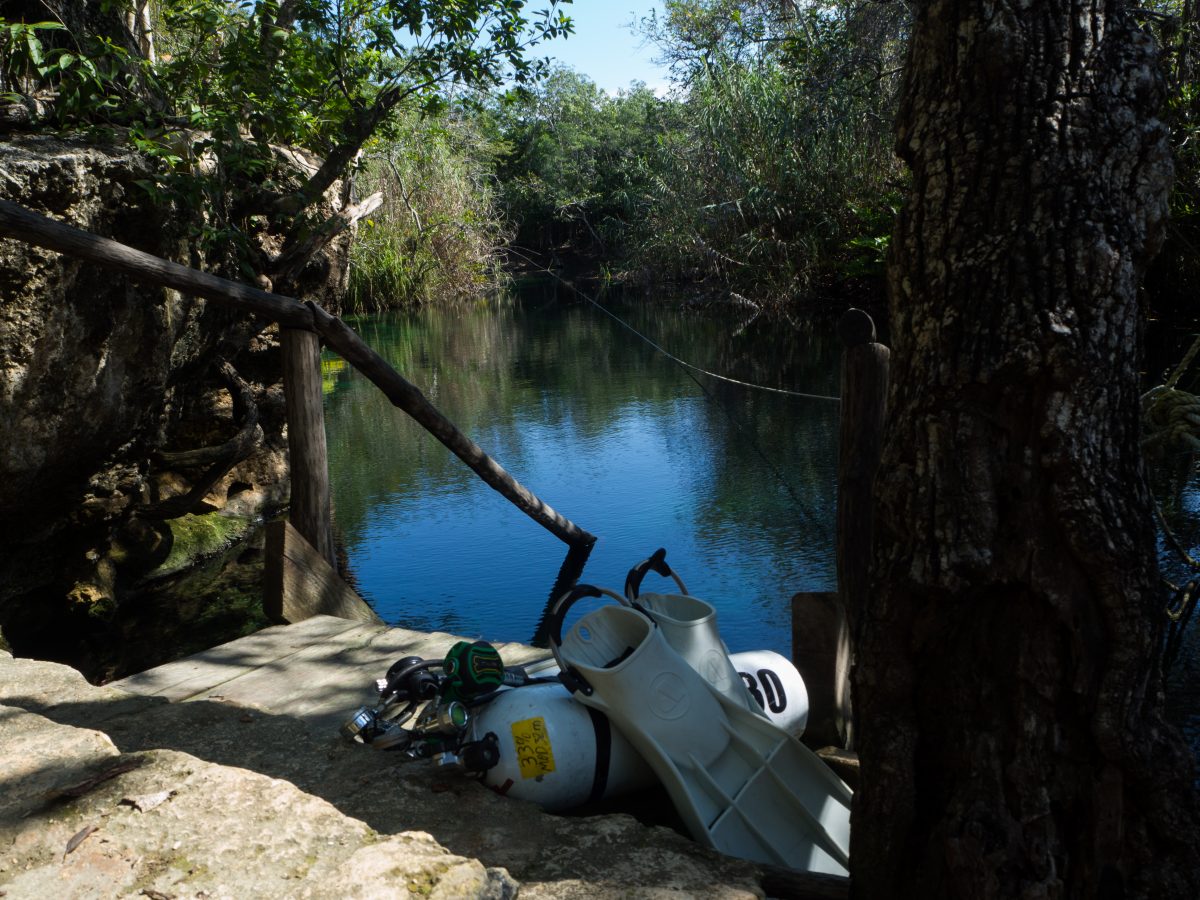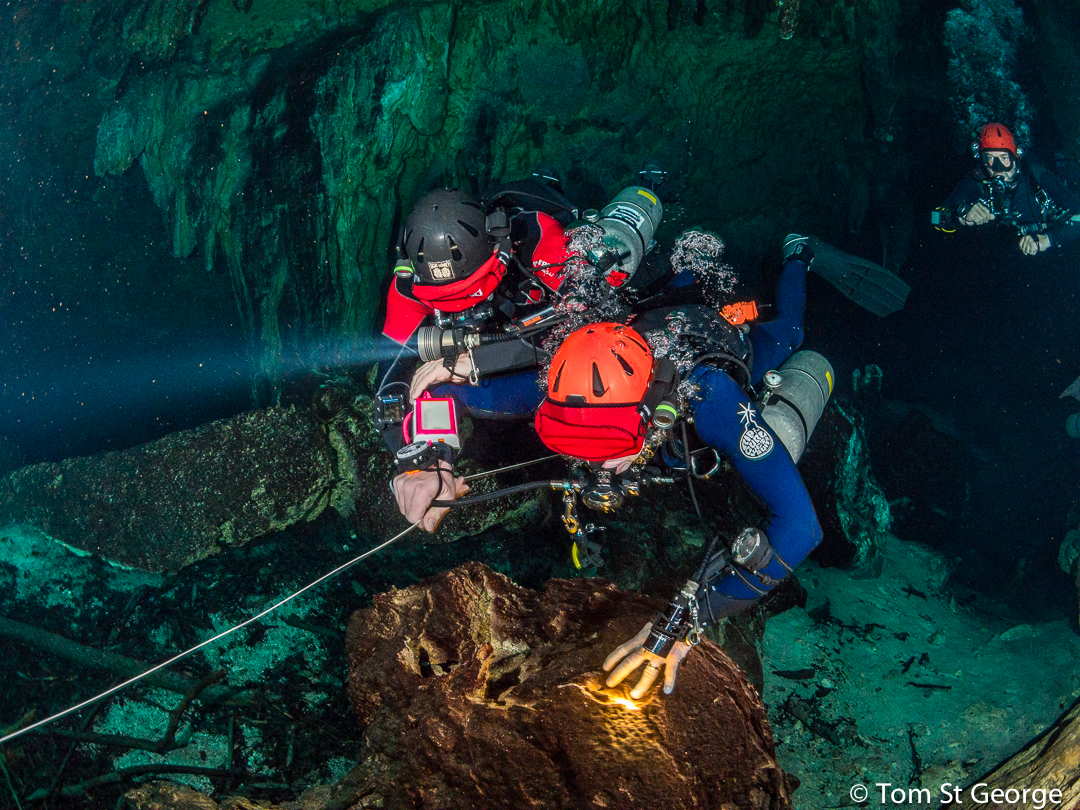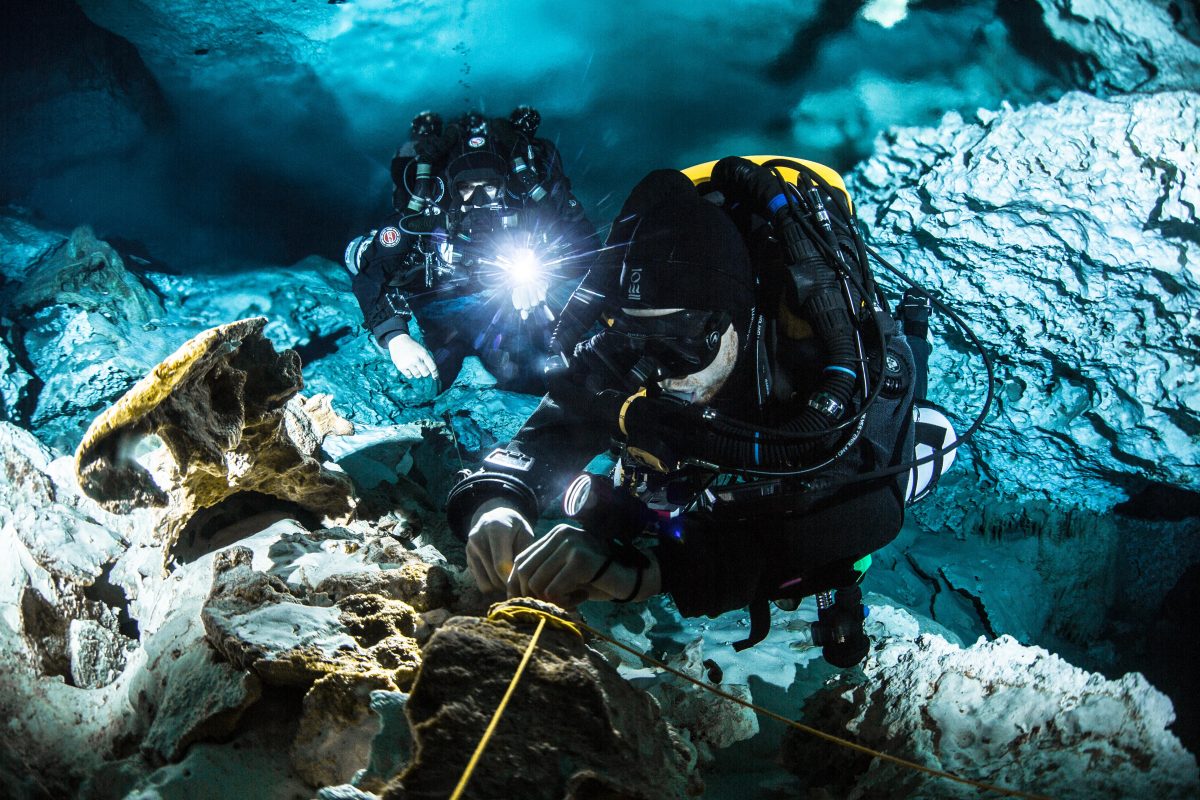My latest trip as the European Rolex Scholar opened the gates to the underworld. I travelled to Tulum, the Mecca of underwater caves on Mexico’s Yucatan Peninsula. There, Lanny and Claire Vogel welcomed me at Underworld, a brand new and purpose built dive centre. Their place turned into the venue of Cave Camp, drawing together expert instructors and cave enthusiasts from around the globe. Caves have been my passion for several years, but so far I have only made it into dry limestone and glacier caves. So, I was extremely excited to combine this with my enthusiasm for diving. I cannot thank Lanny and Claire enough for being such wonderful hosts, as well as Ian France and Sami Paakarinen who taught me safe cave diving techniques.

Intro to Cave

Ian, one of the UK’s most committed mine and cave divers, taught me the CCR (closed circuit rebreather) Intro to Cave course. He showed me how to lay lines into caves and connect to the main line, first practising dry above ground before going into the subterranean world. To prepare for the overhead environment, we also performed extensive checks and drills. I soon realised that cave diving is a psychological challenge in equal parts to its skill and equipment requirements. This became particularly clear when practising zero visibility or complete light failure scenarios with a black-out mask. The cardinal rule of cave diving dictates to maintain a continuous line to the surface. We practiced blind exits and simulated lost line incidents. These drills drove home the message that you must take every precaution to avoid such scenarios from happening in real life.

CCR Full Cave
After four days of the introductory cave diving course, Sami continued my training towards the full CCR cave certification. He taught me how to navigate complex cave systems, making jumps and bridging gaps. We completed two circuits and continued to work on rebreather and cave skills. Advanced dive planning was a key component of the full cave course, including learning how to make extended dives into the underworld and making sure that you bring sufficient bailout gas.

My first dives into caves, however, where so much more than a normal course aiming to fulfil skill requirements. The Mexican Cenotes (limestone sinkholes) around Tulum are beautifully decorated mazes, with awe-inspiring speleotherms waiting behind almost every corner. Below a depth of 8-15m dependent on the site, dense salt water fills the Cenotes. This percolates through the limestone from the sea and creates a magical halocline at the boundary to the shallow freshwater layer. When undisturbed, the halocline looks almost like a false ceiling, shimmering like a mirror.
Yet once the first diver penetrates this boundary layer, the mixing of fresh and salt water (halocline) blurs the water into a hazy fuzz. For the teammates that follow, this can feel like looking through an unfocused lens, and trying to discern the cave line nearly gave me headache. But simply moving a little to the side rather than following in the exact path of the lead diver easily remedies the problem, giving the second and third team diver gin clear perspectives. Once we entered the salt water part of the caves, we were rewarded with a deep sky-blue colour that appears to remove all darkness from the tunnels.

Cave Camp — a social hub for experts and enthusiasts

At cave camp, the cave training didn’t stop after theory sessions and dives with the individual instructor. Lanny and Claire put together a great evening programme of social events, presentations and forums to promote learning beyond basic training. Inspirational talks on cave expeditions, a cave diving movie and delicious evening barbecues were just some of the perks at Cave Camp.

It is difficult to capture the beauty of the Cenotes. Subterranean caves held a special status in ancient Mayan and Greek culture. During my dives I gained some insight into why these civilisations felt such a strong connection to the underworld. It was a true privilege to be introduced to underwater caves by Ian and Sami, two seasoned cave divers who I have admired for a long time. Cave camp was the ideal opportunity to learn how to dive overhead environments. I’m excited to return for Cave Camp in 2017 to explore more of the Mexican cave systems with Lanny and Claire.